Wind Cave National Park is home to one of the longest cave systems in the world. Touring the cave is the main reason for visiting this park but there is a lot more to do here than explore this underground world.
Above ground, Wind Cave National Park is home to one of the largest mixed-grass prairies in the United States. Miles and miles of hiking trails crisscross through these prairies. Bison, pronghorn, elk, coyotes, and prairie dogs can be found in abundance here, along with many other animals. In fact, this is one of the best national parks in the United States for wildlife viewing, rivaling Yellowstone in some respects.
The best way to explore the above ground world of Wind Cave National Park is by hiking and we have a great trail to recommend. The Lookout Point Trail is relatively short and not too challenging, so it is a great hike for active, adventurous kids and adults. Along the way, you will walk through fields of prairie grass and forests of ponderosa pine, past prairie dog towns, and most likely you will see a few bison, elk, or pronghorn.
This hike was one of our unexpected surprises on our visit to South Dakota and I hope you enjoy it just as much as we did.
Lookout Point & Centennial Trail Loop Hiking Stats
Distance: 4.8 miles
Difficulty: Easy to moderate
Total Ascent: 550 feet
Length of Time: 2 to 3 hours
When to go: Wind Cave NP is open year round. In general, the roads are also open year round, although they can temporarily close during and after snowstorms. For current travel conditions in the park, you can contact the visitor center. The best time to do this hike is in the spring or fall, when temperatures are pleasant. Poison ivy is found along the trail in the summer months.

Map of the trail (from the sign at the Lookout Point trailhead)

Elevation profile, hiking the loop clockwise (Centennial Trail to Lookout Point Trail)
Please practice the seven principles of Leave No Trace: plan ahead, stay on the trail, pack out what you bring to the hiking trail, leave areas as you found them, minimize campfire impacts, be considerate of other hikers, and do not approach or feed wildlife.
Hiking the Lookout Point Trail – Centennial Trail Loop
Step-By-Step Trail Guide
Two trails combine to form this loop (the Centennial Trail and the Lookout Point Trail). The trail is marked by wooden posts about every 100 meters. For the most part, the trail is a narrow, singletrack trail through prairie grass. I recommend wearing long pants because the trail is narrow in some places and the pants will protect you from the grass, small shrubs, and poison ivy.
Getting to the Trailhead
The trailhead is labeled “Lookout Point Trail” on Google maps. Parking for this trailhead is located on the tight bend of Highway 87 just north of US Highway 385. The parking lot is small with enough room for roughly 8 cars.
There are two trailheads that start at this parking lot. Depending on the direction you choose, you will start on one of these trails and finish on the other one.
The Centennial Trail: The Centennial Trail is a 111-mile trail that starts here, in Wind Cave National Park, travels north through Custer State Park and the Black Hills, before reaching Bear Butte State Park. On this loop hike, you will hike about 2 miles of the Centennial Trail.
Lookout Point Trail: This trail climbs up to an overlook, called Lookout Point, which is the highest point on this hike. From here, you have great views across the mixed-grass prairies and ponderosa forests.

Which Direction is Best?
Since this is a loop, you can hike the Lookout Point Trail – Centennial Trail in either direction.
We planned on starting the hike on the Lookout Point Trail, but as soon as we descended into the first valley, we met two bison on the trail. With no room to safely go around them, we walked back to the parking lot to the Centennial Trail, hoping they’d be gone later in the day when we finished the hike.

From the very start of this hike, it felt like an adventure. This is a much different experience than hiking to a mountain peak in a long line of hikers. To be out here, on this low-traffic trail, with no one else around, felt wild and wonderful.
We hiked this trail in a clockwise direction. In this direction, it is an easy, 2-mile downhill walk on the Centennial Trail. A short but strenuous climb recovers all the elevation you lost at the start of the hike, and for the next 2 miles it is a mostly flat walk through the prairie, with your best chance of spotting bison.
If you do this counter-clockwise, you will have the flat walk through the grassland first. It will be a short, somewhat steep hike down to the Centennial Trail, followed by a slow and steady ascent back up to the parking lot.
I think this hike is great in either direction. It just depends on what you want to see first and if you would rather walk up or down the short, steep section about midway through the hike.
On the Trail
Centennial Trail
The Centennial Trail gradually descends from the parking lot, following along Beaver Creek. The hiking trail crosses this creek several times but there are wooden bridges in place which makes the creek crossings very easy.

This trail is periodically marked by wooden posts with the number 6 on them.
We saw several snakes on the trail as well as a few bison in the distance. I also read that it is possible to spot elk and cougars here although we never saw any.

Eastern Yellowbelly Racer
Lookout Point Trail
Once you emerge from the valley, the trail splits. The Centennial Trail breaks off to the north. Take the trail to the right, the Lookout Point Trail, which is labeled with a number 4. For a brief period (about a half-mile), the Lookout Point Trail joins the Highland Creek Trail (trail #7).

Just before you start the climb, the Highland Creek Trail will branch off to the left. Stay to the right to continue on the Lookout Point Trail.
Now it is a short but somewhat strenuous climb up through a ponderosa forest. Once at the top of the climb, it is a mostly flat walk back to the parking lot.
Once you emerge from the forest, you will hike through the mixed-grass prairie that makes this park famous. We didn’t have to go far until we could see a herd of bison not too far off in the distance.
It’s at this point that you will also see a huge field filled with prairie dogs and their burrows. As you approach them, the sentries stand up on their hind legs and bark a warning to their buddies. Once you get close to them, they disappear underground, emitting one last squeak.
This field, with the prairie dogs and the bison, was the highlight of the hike for us.

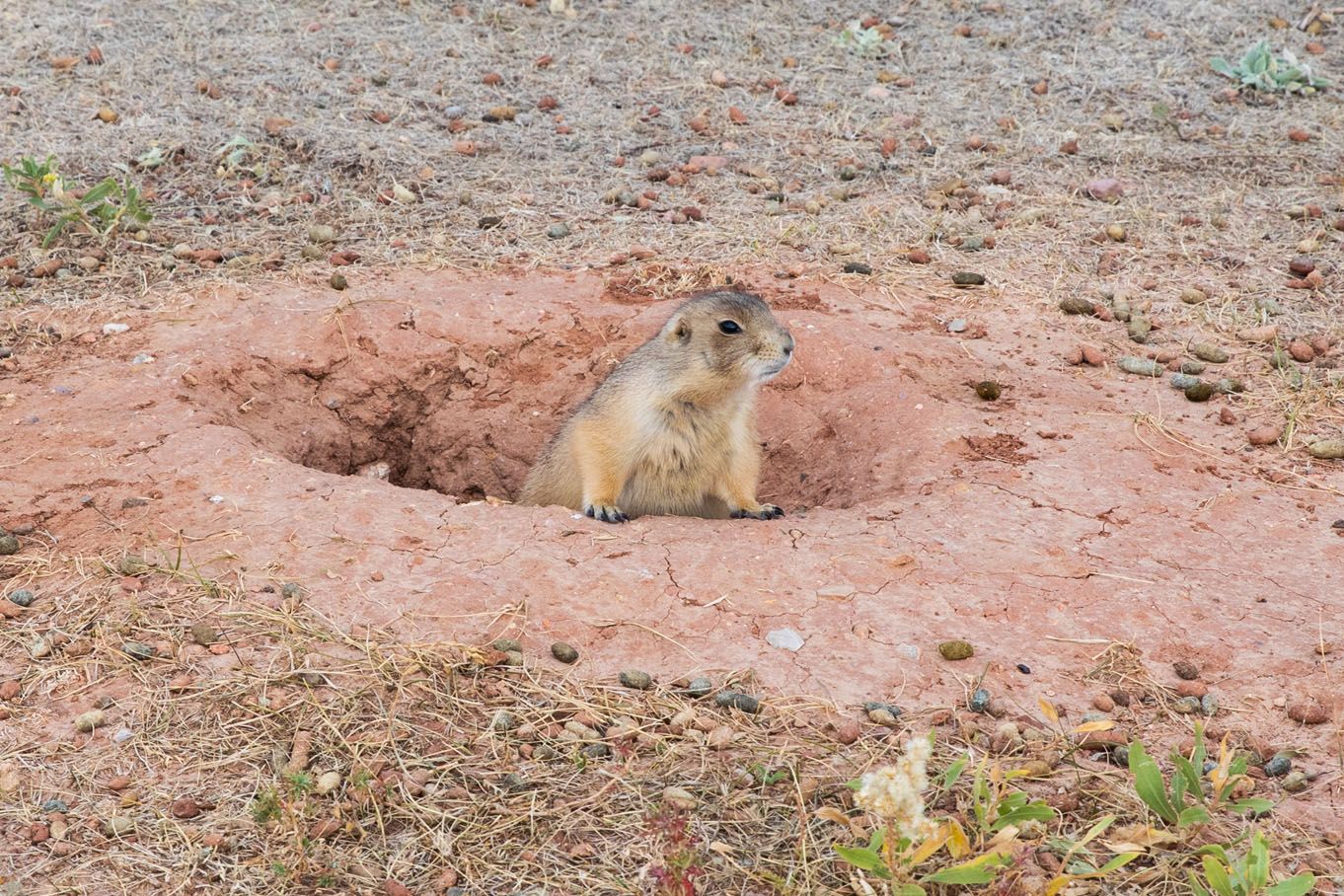


It’s just over a mile to go. You will make one last descent down to another creek and then climb up through a valley before reaching your car. The two bison that turned us around earlier in the day were still here, but now they both were lounging in the grass, away from the trail.

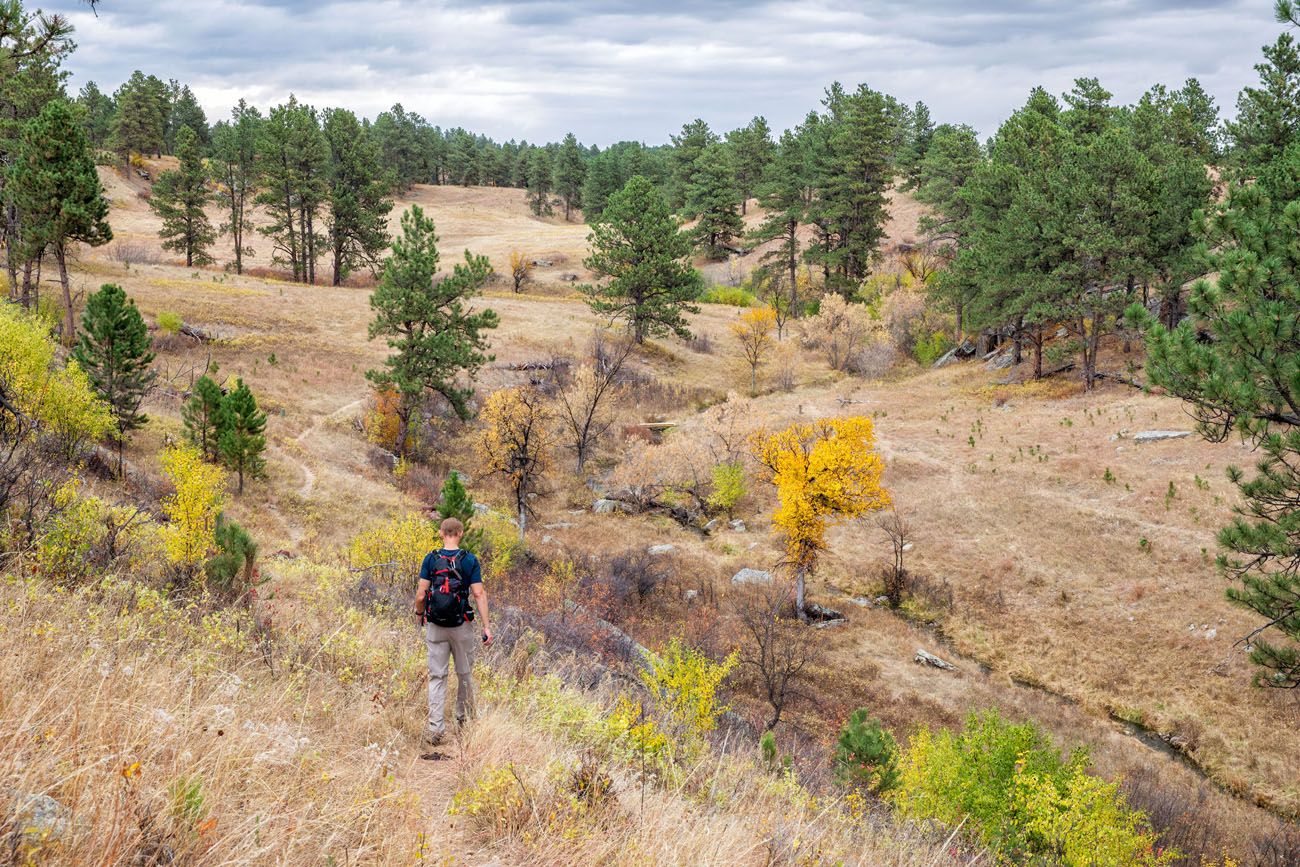
About Our Experience
When planning our trip to South Dakota, we thought that we would skip Wind Cave National Park, since tours of the cave were not being offered during our visit (our first visit was in mid-October 2020). However, we had some free time, so that gave us enough time to add on a short day hike in Wind Cave National Park. But honestly, our expectations were a little low.
This hike blew away all of our expectations. Tim and I loved this hike. Sometimes, it is the unplanned moments that turn out to be your favorite moments while traveling, and for us, this was just the case.
During the two hours it took to hike this trail, we spotted lots of bison and of course those fields filled with barking prairie dogs.
Our favorite moment was standing in the prairie, watching the bison slowly plod through the tall grass. It was just the two of us, the bison herd, and the noisy prairie dogs…and it was amazing. It made any bison spotting from the car, whether in Yellowstone, Custer State Park, or the Badlands, seem somewhat boring. Here we were, alone, standing in the same field as these magnificent animals, and it was awesome.
We did this hike in mid-October, on a chilly, windy day, so crowds were low in the park. We only saw a few people during the entire hike. In the busier months (late spring to early fall) expect more people on the trail.
A year later, we returned to Wind Cave National Park. Tim and I toured the cave and hiked a few more above ground trails, and put together a newer post about the best things to do in Wind Cave National Park.
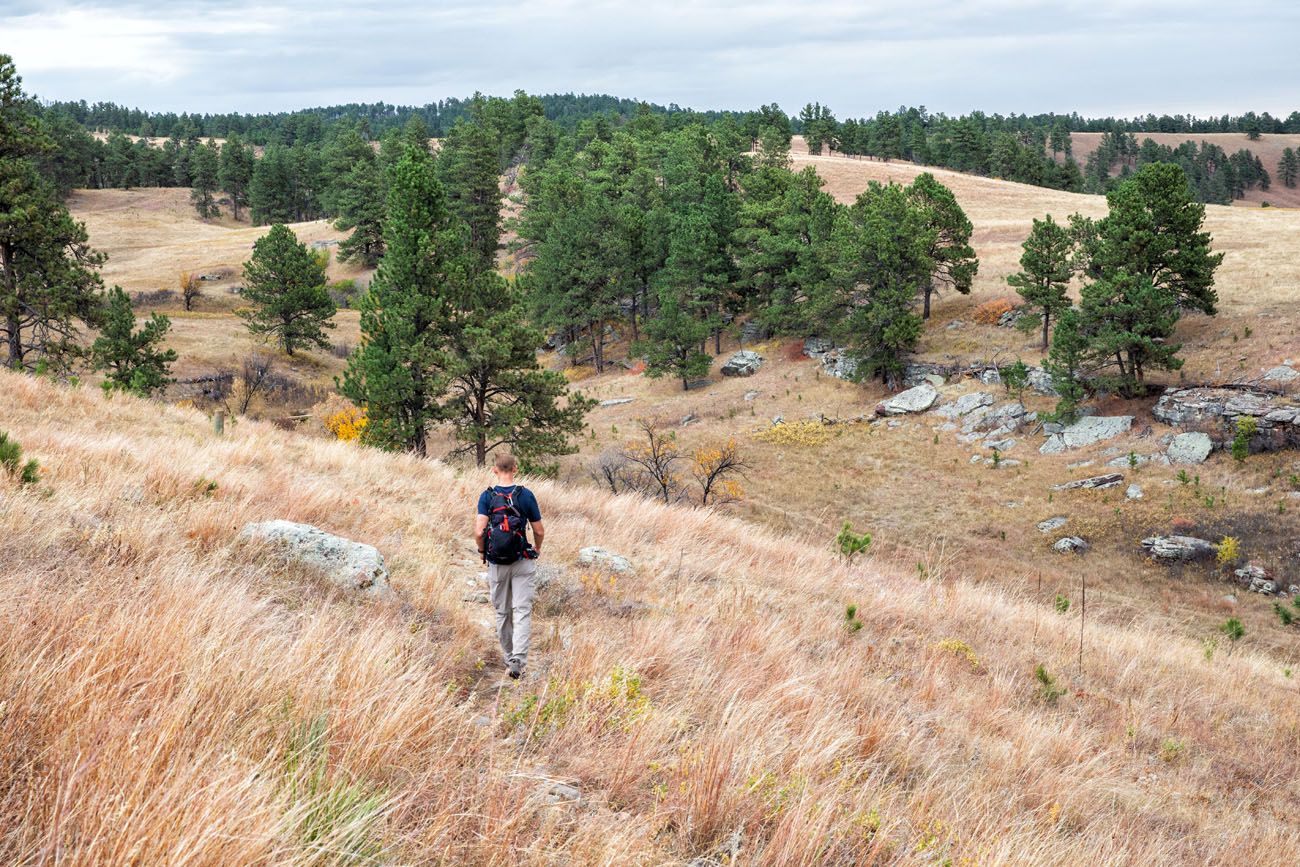
Tips to Have the Best Experience
Bison look slow but they can be dangerous. Do not approach the bison and if they are standing in the trail, you will have to walk off trail to go around them. In general, you should try to keep a minimum of 25 feet between you and a bison.
Wear long pants, even in the summer months. The trail is a narrow with high grass on either side. In the summer, poison ivy grows in abundance along the trail.
Bring a hat and sunscreen. There is little shade along most of the trail.
In the summer, bring 2 liters of water per person.
Leave no trace. When you are in the park, practice the seven principles of Leave No Trace. This includes packing out what you bring into the park, be considerate of other hikers, stay on the trail, and do not remove anything from the park.
Check trail conditions before you go on the National Park Service website.
If you have any questions about hiking the Lookout Point Trail Loop, or if you want to share your experience, let us know in the comment section below.
More South Dakota & USA Travel Guides
If this is part of a bigger road trip through the USA, visit our United States Travel Guide for more inspiration and travel planning tips.

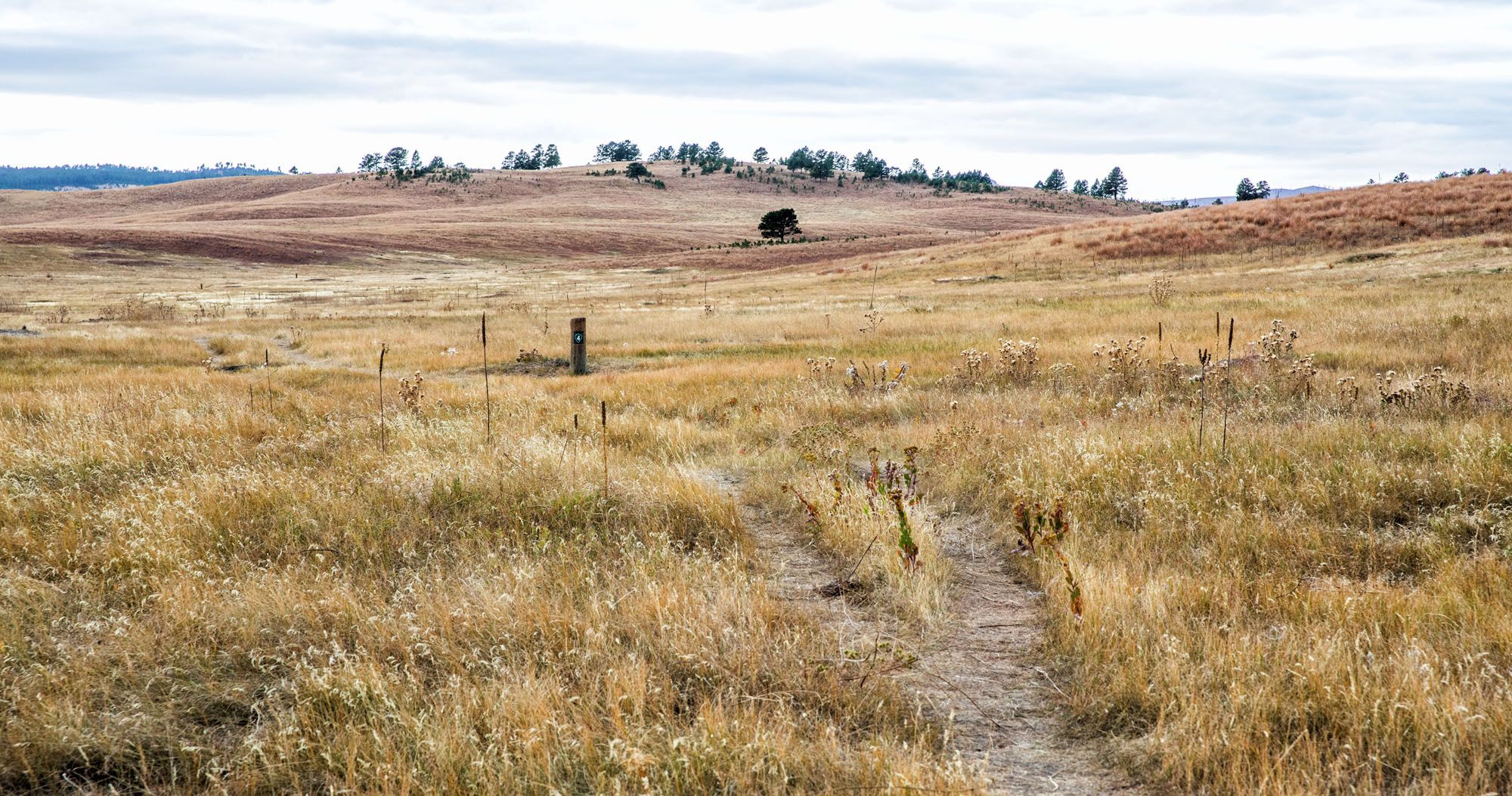












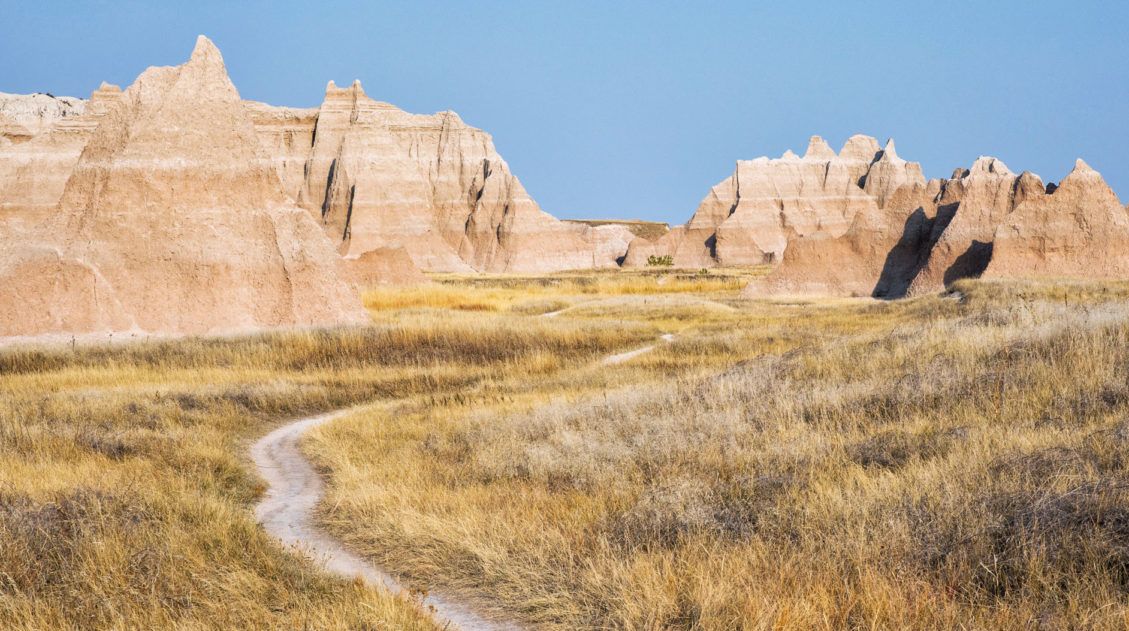


Comments 11